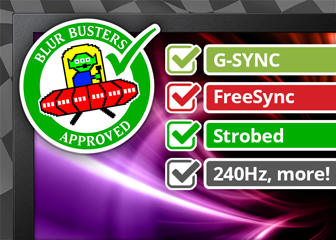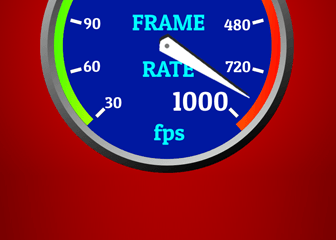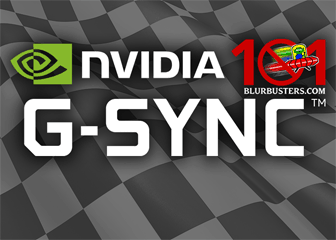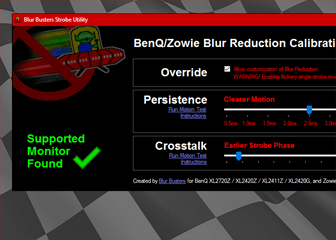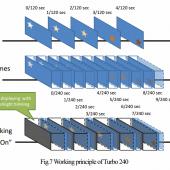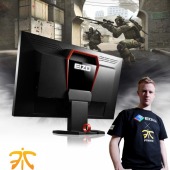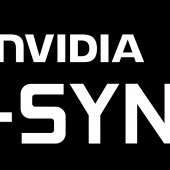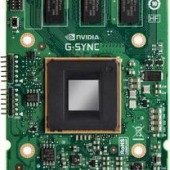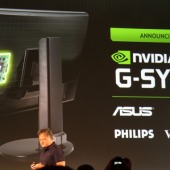Archive
The EIZO Foris FG2421 is marketed by Eizo as a “240Hz” monitor. How is 240Hz accomplished out of simply repeating a 120Hz refresh without interpolation? There a good, valid scientific rationale: 1. First pass refresh is overdriven, done in total darkness (erases previous...
Read more
EIZO announces Foris FG2421, a 240Hz VA gaming monitor!
Eizo has announced the Foris FG2421, a new 240Hz VA monitor has been released! This is the retail gaming version of the previously released FDF2405W professional monitor which also uses a official/optional strobe backlight setting to eliminate motion blur. No interpolation is used!...
Read more
Blur Busters helping Google fix 120Hz scrolling in Chrome
Blur Busters is helping push 120Hz-friendliness into web browsers, with TestUFO Motion Tests, the 120Hz Web Browser Tests as well as Helping Google Fix Chrome 30 Animation Bugs. Recently, Chrome has difficulties with 120Hz smooth scrolling. Even on 120hz monitors, scrolling...
Read more
Variable Refresh Rate: Should be a part of HDMI 3.0
Variable refresh rate technology (G-SYNC) has arrived for computers. Apparently, such technology has spinoffs for fixed-refresh rate applications! HDMI needs to adopt this. Reduced Latency of Fixed Refresh Rates: G-SYNC decouples frame delivery time from refresh length, and reduces scan-out time....
Read more
G-SYNC monitors supporting 177Hz?
At least one source mentioned 177Hz support for future G-SYNC monitors, including Guru3D. We noticed this number exactly matches DisplayPort 1.2 single channel bandwidth of 8.8 Gbits/sec. (half of 17.6 Gbits/sec dual-channel). 1920×1080 x 24-bit x 177 Hz = ~8.8...
Read more
G-SYNC reduces input lag for fixed refresh rates too (emulators, etc.)
It is observed NVIDIA G-SYNC is also useful for low-latency fixed refresh rate applications as well: It accelerates frame delivery from GPU to monitor: Frames are delivered from GPU to monitor in 1/144sec instead of 1/60sec when running at 60Hz!...
Read more
Motion Blur from Display Persistence, not GtG Transitions
John Carmack of iD Software recently talked about persistence at the G-SYNC launch. Modern LCDs now create more motion blur from persistence (static pixel state) and not from transitions (grey-to-grey). Transitions now take only a fraction of a refresh. Pixels are mostly static...
Read more
G-SYNC monitors supports strobing at 85Hz and at 144Hz
UPDATE: This is old information, posted before G-SYNC was released. Blur Busters now has a G-SYNC monitor (see Our Preview of G-SYNC) with ULMB. 85Hz strobing is confirmed, however, 144Hz strobing is not available. Good news for people who want “LightBoost”...
Read more
ASUS VG248QE is upgradeable to G-SYNC
If you already purchased an ASUS VG248QE monitor, or buying it now, you are in luck. The ASUS VG248QE monitor is upgradeable to G-SYNC. Blur Busters plans to publish a G-SYNC Mod Walkthrough, once our G-SYNC upgrade board...
Read more
How Does NVIDIA G-SYNC Fix Stutters?
People are very surprised that you can have a fluctuating framerate without seeing any erratic stutters. But, surprisingly, it is possible on a variable-refresh-rate display such as NVIDIA G-SYNC! These diagrams explain why NVIDIA G-SYNC eliminates stutters, from the human...
Read more
CONFIRMED: nVidia G-SYNC includes a strobe backlight upgrade!
When Andy of nVidia was asked whether LightBoost could be combined with G-GSYNC, AndyBNV of nVidia confirmed on NeoGaf: “We have a superior, low-persistence mode that should outperform that unofficial [LightBoost] implementation, and importantly, it will be available on every...
Read more
NVIDIA G-SYNC: Variable Refresh Rate Monitors!
One small step closer to tomorrow’s Holodeck: NVIDIA G-SYNC! It is a technique for refreshing computer monitors at variable intervals (up to a certain limit). Instead of refreshing monitors at exact intervals, the monitor is refreshed when the GPU finishes generating a...
Read more
